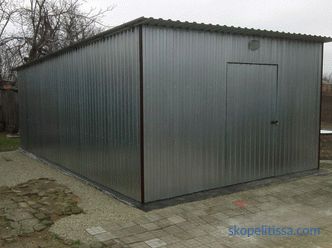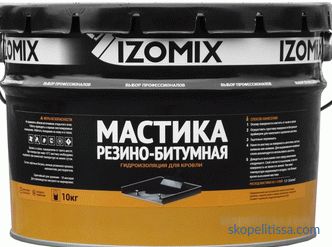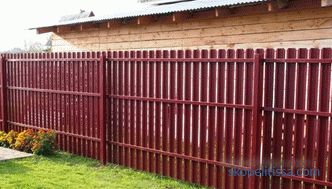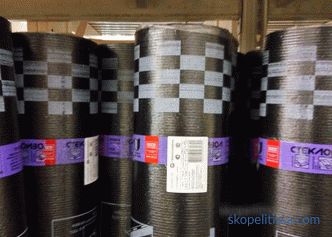When the snow melts and when it rains, water streams flowing from the roof can damage both the facade and the building, as well as lead to leaks and damage to the foundation. In order to avoid this, ebbs for the roof are installed - the necessary elements of the building. The article tells about the system for draining water into the drainage system, types of drainage and their features. Having studied the information, you can choose the best option for each case.
Why low tide is needed
The ebb tide on the roof has several goals:
-
strengthening roof stiffness;
-
increasing resistance to temperature changes, to the effects of precipitation;
-
aesthetic attractiveness;
-
protection of walls against ingress of large amounts of water;
-
additional roof protection;
-
closing joints between materials.
The organization of the water removal system is not difficult if it is carried out in accordance with the requirements for installation and the choice of material. Currently, there is simply a huge range of systems that allows you to assemble a set in accordance with their requirements for color and other characteristics.
5 basic requirements for the drainage system
Before choosing one of the types of outflows, you need to make sure that it meets such important requirements:
-
aesthetic attractiveness and matching the style of the building;
-
anti-corrosion coating ;
-
resistance to deformation;
-
high strength ;
-
functionality .
Drainage systems fall into two main groups: metal and plastic. Each of them has its advantages and disadvantages.
Material production: the advantages and disadvantages of each
Rain ebb under the roof can be:
-
galvanized ;
-
copper ;
-
aluminum ;
-
titanium-zinc ;
-
plastic .
In rare cases, ebb can be made made of stone or ceramics. Their low demand is associated with the complexity of production and a very high price. There are also drainage structures made of complex alloys, which usually have a higher cost.
For your information! Metal structures during rain are much noisier than plastic ones. Sometimes their surface is pretreated with polymers for better sound dampening.
Galvanized structures
Alloyed steel has a thickness of about 1 mm, it is considered a good option for the manufacture of drainage. Reasonable price is combined with the strength of products and their resistance to corrosion.
Copper structures
This material is one of the most expensive castings in the manufacture, but also durable. Not every type of copper possesses resistance to corrosive processes, but only oxidized and brass-plated.
The copper ebb also has a lot of weight, and therefore requires a very secure fit. The downside to using this material is its high price.
Aluminum constructions
Aluminum - lightweight material, having a thickness of up to 1 mm, is fairly easy to assemble. It is light, but it is susceptible to oxidation when in contact with water.
Tip! To prevent structural damage, the gutter surface must be covered with special composition.
Titanium-zinc structures
This is a durable, expensive and very durable material. It has a long service life. Zinc content in a similar alloy exceeds 99%. It is a plastic material with good anti-corrosion properties.
The lifetime of such a system is more than 100 years. Among the advantages - a presentable appearance and environmental friendliness, no need for additional painting or other processing. Minus - high price.
Plastic structures
Plastic roof drainage systems are considered the most popular. They are quickly mounted, have light weight, reasonable price and good strength. It does not fade and can serve for a long time.A large selection of colors and patterns allows you to choose the gutters in a suitable design. The lack of plastic - fragility at low temperatures.
On our website you can find contacts of construction companies that offer design and repair services roofing . Directly to communicate with representatives, you can visit the exhibition of houses "Low-rise Country".
Selecting the shape of the gutter >
round ;
triangular .
It is in the gutters that water flows from the roof surface, which is then diverted in the right direction. Without their installation, the drainage system will not proceed in an orderly manner, and water may cause harm to the house.
The shape of the gutter plays not only an aesthetic role. It depends on how well the water will pass.
Tip! Experienced craftsmen consider the rounded shape to be more functional. It is less likely to cause blockages as a result of debris, dry leaves and dust. Therefore, it is less necessary to clean it.
Gutters
Vertical gutters divert water from the bottoms. Usually they are installed on the house after 5 or 6 meters from each other. The material of their manufacture and color should match the ebb under the roof. If the house has a complex structure and shape, then the installation of drain pipes is even more dense - at least at every corner of the building.
On the drainpipe water is under great pressure. To compensate for the pressure make the bottom drain in the form of a knee.
For your information! The distance from the knee of the lower drain to the ground should be no more than 0.5 meters.
It is important to choose the location of the drain pipe correctly. Water that will flow along it should not heat the foundation or flood the pedestrian part of the pavement. The best option for water drainage will be storm sewers, specially made deepening in the sidewalk for drainage.
Sometimes, to collect rainwater, drains are organized into a barrel or tank. In this case, it is necessary to take into account its volume in advance and that the capacity will have to be emptied periodically.
How the ebb is set
The ebb-flow is mounted on the rafters. In the absence of an overhang, the ebb must be fixed on the eaves board or wall.
It may be interesting! In the article on the following link read about how the roof is made of corrugated .
The installation of ebbs on the roof is carried out in a certain sequence :
-
To determine the position of the ebb pull the cord under the roof for future inclination in the direction of the drain pipe (about 2 cm).
-
When installing , the markup begins with the installation of the funnel . Water from the gutter should flow to the edge of the funnel, then get into the drain pipe.
-
Gutters should be located higher than the beginning of the vertical pipe.
-
After every half meter, brackets are installed.
-
With heavy drainage structures (made of copper or steel), the mounting locations of the brackets are further strengthened.
-
The individual gutter elements are mounted in brackets and connect to each other.
-
The joints can be treated with sealant .
-
Installation ends testing system functionality.
What to look for when buying and installing
Even when choosing a good material, a poorly performed installation can ruin everything.
In order for roof drains to serve for many years, you must adhere to the following rules :
-
The size of the gutter should correspond to the area of the roof slope. The larger it is, the larger must be the diameter of the gutter. Otherwise, the structure may not cope with the diversion of water during heavy rain or intense snow melting.
-
Fittings and all materials for fasteners must conform to designs in size and material.
-
When ordering low tides, it is necessary to add to the required length a margin of 15% or slightly less for the assembly of the joints.
-
Teardrop (dripstick) will prevent splashing. It starts up under the roof, and its bottom enters the chute.
-
Each slope is usually supplied with two drainage pipes.
-
It is necessary sufficient number of drainpipes to ensure complete drainage of water.
-
Low tides should be a few centimeters from the edge of the roof . Otherwise, they may be damaged when the snow melts.
-
The color of the ebb is chosen in most cases to match the color of the roof or building. The approach to the appearance depends on whether this element should serve as a decorative element or it should be practically invisible.
From the video you can learn the details of installing the drainage system
It might be interesting! In the article at the following link read about the project of a house with a wavy roof .
Installing water drains on the roof protects the building from the adverse effects of precipitation. Installation of the structure must be carried out carefully, in compliance with all technological requirements and using the necessary tools for this.
Rate this article, we tried for you




